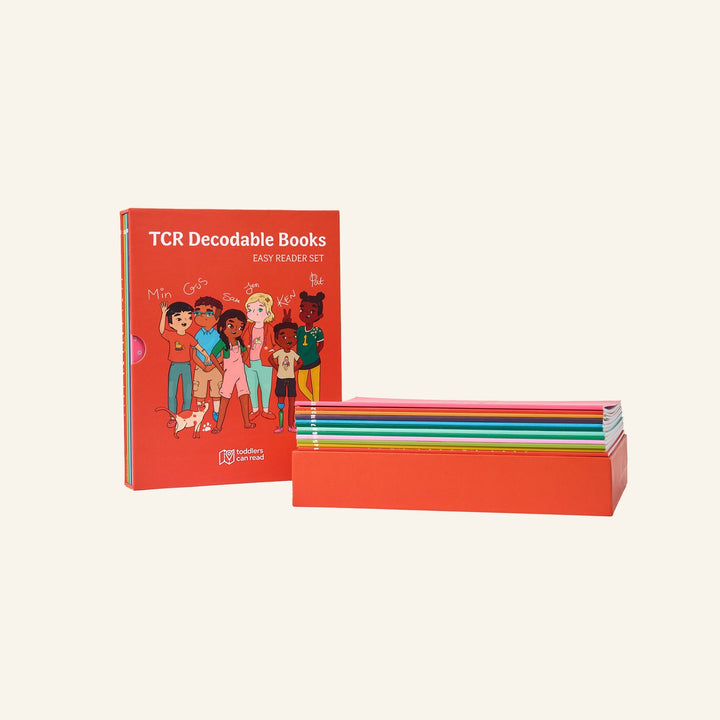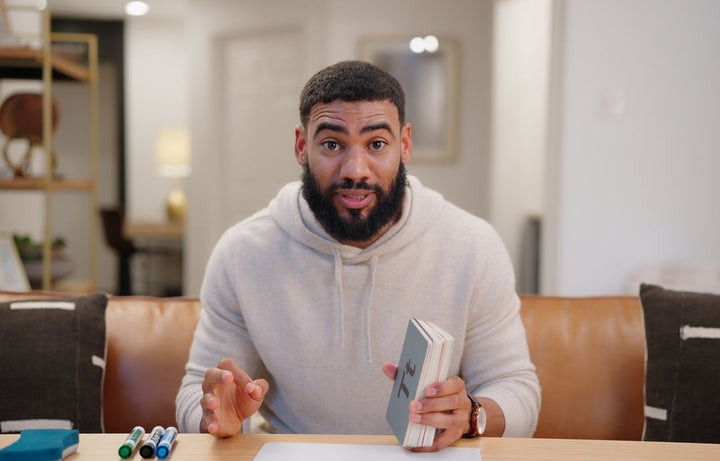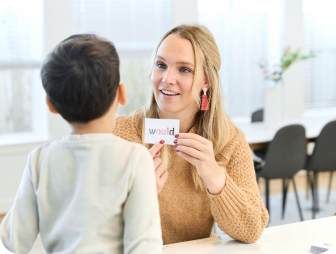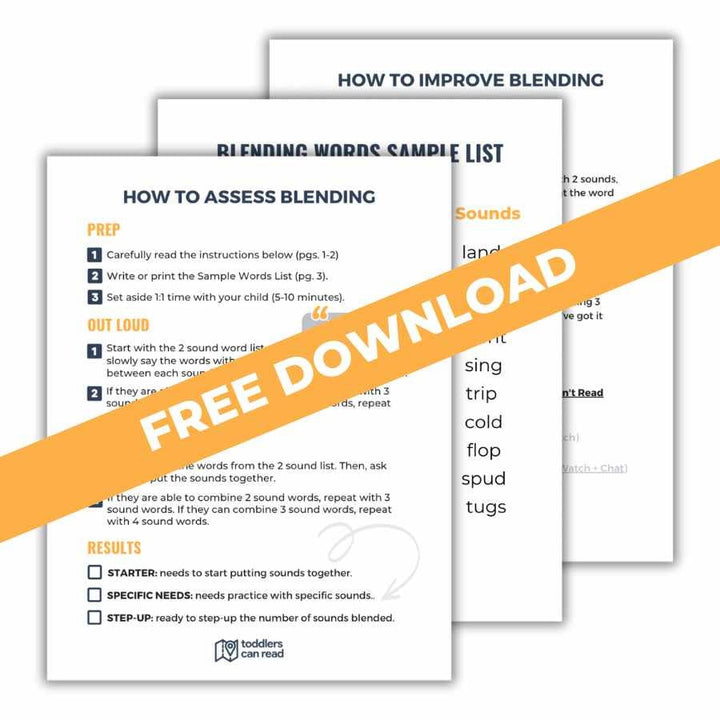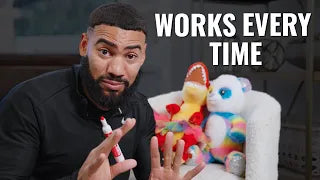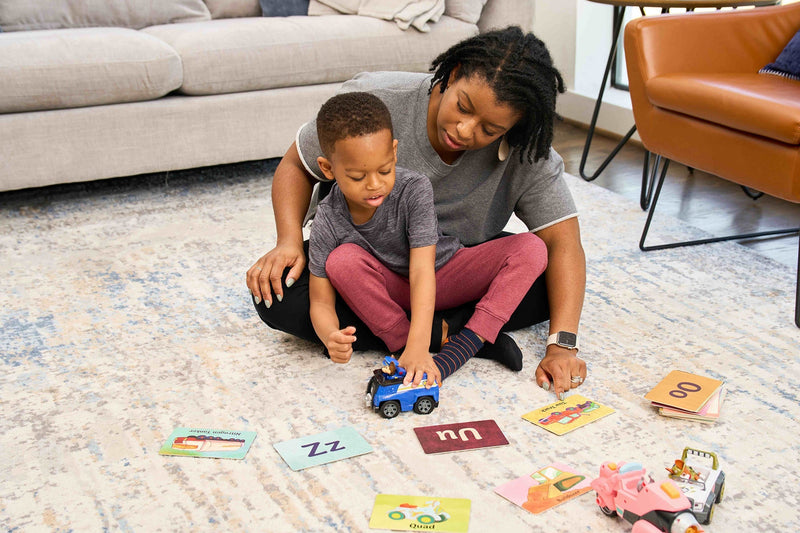Teaching kids to read can and should be fun.
When I talk about how to teach children to read, some folks express concern. Don't kids have other things to focus on right now? Like just being kids? You know... playing?
And some folks have even stronger opinions:

Many of these concerns and objections stem from misinformation floating around online. And here's my response: Toddlers don't need to read. But they can. And we don't have to choose either play or learning, either. Play-based learning is a real thing. A really effective thing!
Practically speaking, we do have to engage kids in our reading lessons. If we don't keep kids interested in what we're teaching, they're not going to maintain the focus necessary to practice these important skills.
But "maintaining focus" doesn't mean forcing a kid to sit in a chair for 30 minutes while you drill them on letter sounds. Instead, the key to focus at this age is making reading time fun.
So, let's talk about nine things you can do to incorporate play into your reading lessons.
The Foundation: Prepping for Play Based Learning
As both parent and teacher, it's important to master the fundamentals first. Here are some tips on how to make teaching reading fun—for both you and your little one.
#1 Make lessons effective.
When kids feel frustrated, they disengage—regardless of how fun an activity might be. Making your lessons effective means using evidence-based reading strategies.
- Understand how reading works. You can't teach what you don't know. Learn first, then teach.
- Don't overwhelm. Choose a couple of letter sounds to work on at a time. Start slow.
- Honor pacing. Your child has a unique learning pace. Don't rush through your lessons.
- Manage expectations. Remember this is hard work for both of you.
By focusing on effectiveness before engagement, you can have fun lessons and feel confident your little one's absorbing the lesson, too.
#2 Build tolerance for structure.
Some family environments are naturally less structured. In that case, some little ones struggle a bit more when they're suddenly expected to focus and follow directions.
Helping your child build tolerance for following directions is crucial. Start slow. Build in a short activity every day that gets them listening and focused. Starting the day with a morning message routine can be especially helpful.
#3 Maintain a consistent learning routine.
Most families with young kids have a hard time squeezing in all of their daily to-dos. Which means you might be approaching your kid with reading lessons at a different time of day, every day.
But developing brains don't work well with inconsistent schedules.
In fact, kids need structure to thrive. Schedules and routines help kids feel safe and secure in their environments. And, when kids feel that underlying level of safety and predictability, they're better able to engage their brains and focus on learning.
So, pick a set time for learning and practice. Communicate that expectation and schedule with your kid. Then, stick to it. Here are more tips to help you build your reading routine.
#4 Get on your child's level.
Kids like it when we get on their level. It makes them feel seen and keeps their attention.
Sit close, face-to-face, making eye contact. (If your child struggles with or feels uncomfortable making eye contact, skip this. You know your child best.) When their attention wanders, making gentle physical contact can also bring them back to the present moment.
#5 Give your little one some control.
When kids feel in control, they're much more agreeable to your asks. That means giving choices throughout the lesson that help them feel like they're in the driver's seat.
Just like reading and playing can happen at the same time, giving your child choices and appropriate control while also maintaining your boundaries can happen at the same time, too.
Much of the balance lies in rephrasing questions as statements. For example, we might be inclined to ask, "Do you want to practice your letter sounds?" when what we really mean is, "It's time to practice." So, it's not really a question. But we've opened the door for our child to say no to our ask (that's not really an ask). Then what?
Instead, try a boundary statement then a choice:
- It's time to practice reading! Would you like to play with our sounds at the table or on the couch?
- It's time for our reading lesson. What game would you like to play today?
- Reading time! We're going to practice for five minutes. Would you like to set a timer?
When we give our kids an appropriate level of control, we're letting them choose how they're learning, not if they're learning. And changing up how we communicate these things can keep reading lesson pushback to a minimum.
#6 Keep it short.
Sometimes, your kid is only going to engage for two or three minutes. That's ok. In fact, it's likely developmentally appropriate. Your toddler should be able to focus for only a few minutes at a time.
And it's best to finish your lesson long before your little one's over it.
Being intentional with your time, regardless of how much, gives you the opportunity to teach at your little one's pace.
The Reading Lesson: Playing and Learning
After building the foundation, it's time to dive into the lesson.
Admittedly, it can feel awkward to integrate play and learning if you're not accustomed to embracing both. The good news is that your child can take the lead. Use their interests to keep their interest!
Try these simple tips when you're practicing how to teach your child to read...
#7 Use toys.
Bring reading into your child's regular play. Use their favorite toys and characters in your lessons. Keep their engagement and focus up by incorporating things they already engage with and focus on.
That could also look like this:
- Drive the train to the /y/ sound.
- Make the dinosaur jump on the /s/ sound.
- Can your toy find the /w/ sound?
Using their favorite toys and incorporating their other interests helps kids stay engaged and have fun while learning. Which is a win for everyone.
#8 Get moving.
Bonus points if you can get your little one moving their body during lessons—another evidence-based strategy for cognitive development and learning.
Try this for your next lesson:
- Place 4-8 letter flashcards around the room.
- Say a letter sound and have your child run to the corresponding letter.
- Remember to have them say the sound out loud each time they find it.
- Correct errors as you go and save the cards they struggle with.
- Focus on these challenging letter-sound combos in your next couple lessons.
If you're not fond of running around the house, try this instead:
- Lay out 4-8 letter flashcards on the table.
- Ask your child, "Can you find a letter sound you know? Show me the letter you know, say the sound, then throw the card away as far as you can. Ready? Let's go!"
This simple change from the traditional flashcard merry-go-round can keep your kid in control and engaged while learning. All while having fun!
Movement can also help your child remember their more challenging letter sounds. For example, if they have trouble remembering the /s/ sound, tell them to move their arm like a slithering snake. That way, everytime they see a /s/ sound, they think of that movement and can more easily recall the sound.
The mind-body connection is a strong one. Use it to your advantage.
#9 Change the environment.
Your engagement strategy might have been perfect last month. But this month? Old news.
It turns out kids like new. In fact, evidence shows that curiosity and surprise actually help improve memory. So if what you were doing before suddenly stops working, try changing the environment.
For example, 10 minutes outside with some sidewalk chalk might be your new go-to activity. Try writing several letters on the pavement and having your child run, jump, or skip to the letter when you call out a letter sound.
Get ready to play.
Reading can be fun. And your toddler can do it. My free workshop will show you how.
Check out my on-demand Beginning Reading Workshop to join the thousands of parents who've discovered this surprisingly simple approach to teaching reading as early as 18-months old.


